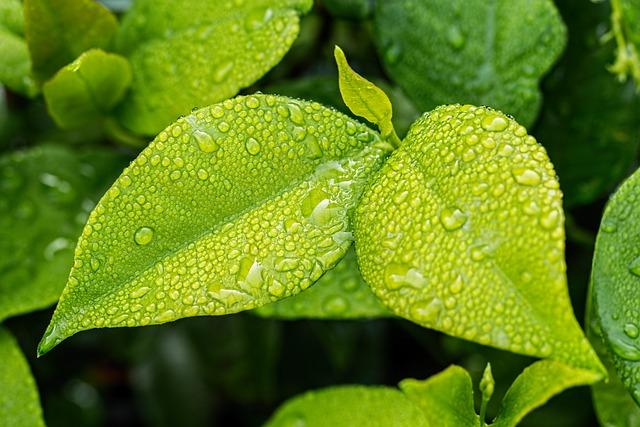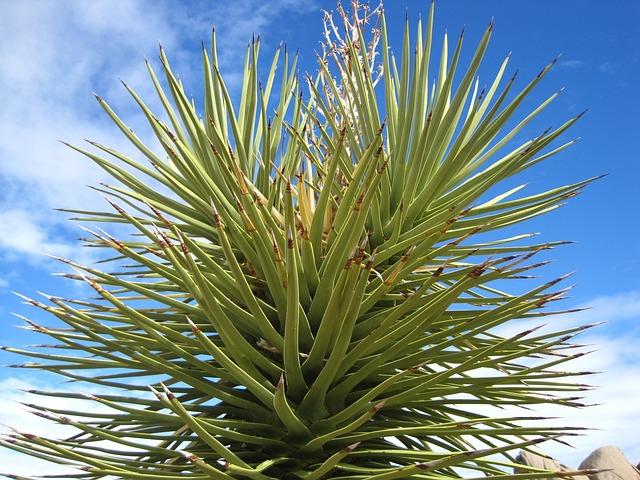A tall spiky houseplant can make a great addition to your indoor space. Not only do they add height and visual interest, but they can also help purify the air.
Spiky houseplants come in a wide variety of shapes and sizes, so you’re sure to find one that fits your space. And because they’re so easy to care for, they make a great choice for busy people or beginner gardeners.
The Benefits Of Tall Spiky Houseplants
There are many benefits to tall spiky houseplants.
- Tall spiky houseplants are great at purifying the air. They help remove toxins and pollutants from the air, making it healthier for you to breathe.
- Not only do tall spiky houseplants improve the quality of the air, but they can also boost your mood. Studies have shown that being around plants can help reduce stress and anxiety.
- In addition to their mood-boosting benefits, tall spiky houseplants can also help increase your energy levels. Plants help us breathe in oxygen and release carbon dioxide. This exchange of gases gives us more energy and helps us to focus better.
Different Types Of Tall Spiky Houseplants
There are many tall spiky houseplants to choose from, and each one has its own unique look.

Credit: Pexels
Here are some of the most popular types:
1. Snake Plants
Snake plants are a type of succulent, which means they store water in their leaves. This makes them very easy to care for, as they can survive in low-light conditions and don’t need much water. Snake plants have long, thin leaves that can be variegated or solid green.
2. Dracaena
Dracaena is a genus of around 120 species of trees and shrubs. They are native to tropical and subtropical regions of Africa, Asia, and Oceania. Dracaena plants have long, strappy leaves and can grow to be quite tall. They are available in a variety of colors, including green, red, and yellow.
3. Yucca
Yucca is a genus of around 50 species of trees and shrubs. They are native to the hot and dry regions of North and South America. Yucca plants have long, stiff leaves and can grow to be quite tall. They are usually green, but some varieties are blue or purple.
4. Aloe
Aloe is a genus of around 500 species of succulent plants. They are native to Africa, Madagascar, and the Arabian Peninsula. Aloe plants have thick, fleshy leaves and can grow to be quite tall. They are usually green, but some varieties are red or yellow.
5. Cactus
Cactus is a genus of around 1,500 species of succulent plants. They are native to the hot and dry regions of North and South America. Cactus plants have thick, fleshy leaves and can grow to be quite tall. They are usually green, but some varieties are red or yellow.
6. Agave
Agave is a genus of around 200 species of succulent plants. They are native to the hot and dry regions of North and South America. Agave plants have thick, fleshy leaves and can grow to be quite tall. They are usually green, but some varieties are blue or purple.
7. Euphorbia
Euphorbia is a genus of around 2,000 species of succulent plants. They are native to Africa, Madagascar, and the Arabian Peninsula. Euphorbia plants have thick, fleshy leaves and can grow to be quite tall. They are usually green, but some varieties are red or yellow.
8. Ficus
Ficus is a genus of around 800 species of trees and shrubs. They are native to the tropics and subtropics of Africa, Asia, and Oceania. Ficus plants have long, strappy leaves and can grow to be quite tall. They are available in a variety of colors, including green, red, and yellow.
9. Bamboo
Bamboo is a genus of around 1,000 species of grasses. They are native to the tropics and subtropics of Africa, Asia, and Oceania. Bamboo plants have long, thin leaves and can grow to be quite tall. They are usually green, but some varieties are yellow or purple.
10. Palms
Palms are a type of tree that is native to the tropics and subtropics of Africa, Asia, and Oceania. They have long, strappy leaves and can grow to be quite tall. They are available in a variety of colors, including green, red, and yellow.
Factors to Consider when choosing a Tall Spiky Houseplant
When it comes to tall spiky houseplants, there are a few things you need to take into account before you can choose the best one for you.

Here are four of the most important factors:
-
The amount of light your home gets
This is probably the most important factor to consider when choosing a tall spiky houseplant. If your home doesn’t get a lot of light, then you’ll need to choose a plant that doesn’t require a lot of light to grow. Some good choices for low-light environments include snake plants, spider plants, and peace lilies.
-
The size of your pot
Another important factor to consider is the size of your pot. If you have a small pot, then you’ll need to choose a smaller plant. Some good choices for small pots include cacti, succulents, and air plants.
-
The type of soil you have
The type of soil you have will also affect which plant is best for you. If you have sandy soil, then you’ll need to choose a plant that doesn’t require a lot of water. Some good choices for sandy soil include cacti, succulents, and air plants.
-
How often do you water your plants
This is the last factor to consider when choosing a tall spiky houseplant. If you water your plants once a week, then you’ll need to choose a plant that doesn’t require a lot of water. Some good choices for low-water plants include snake plants, spider plants, and peace lilies.
The Best Potting Mix For Tall Spiky Houseplants
There are many potting mixes available for tall spiky houseplants, but not all of them are created equal.

Here are a few things to look for when choosing the best potting mix for your plants:
1. Good Drainage.
Tall spiky houseplants need a potting mix that drains well and doesn’t hold onto water. Look for a mix that contains ingredients like perlite or vermiculite, which help to improve drainage.
2. Nutrient-rich
Look for a mix that contains compost or other organic matter. This will help to ensure that your plants are getting the nutrients they need.
3. Suitable pH
Tall spiky houseplants generally prefer a slightly acidic potting mix. A mix with a pH of 6.5 is ideal. You can test the pH of your potting mix with a simple pH test kit.
4. Good Aeration.
Tall spiky houseplants need a potting mix that is well-aerated. This helps the roots to breathe and prevents the mix from becoming compacted. Look for a mix that contains ingredients like perlite or vermiculite, which help to improve aeration.
5. Good Water Retention.
While tall spiky houseplants need a potting mix that drains well, they also need a mix that retains some water. This is especially important in areas with hot, dry climates. Use a mix that has ingredients like peat moss or coco coir, which help to retain water.
When To Water Tall Spiky Houseplants
It is important to water your tall spiky houseplants regularly, but how often you need to water them depends on a few factors. The size of the pot, the type of plant, the weather, and how much light the plant is getting all play a role in how often you need water.

If you’re not sure how often to water your plant, check the soil before watering and if the soil is dry, it’s time to water. While if the soil is still moist, wait a few days and check again.
If you water your plant too often, the roots will start to rot. If you water too little, the plant will wilt. So, it’s important to find a happy medium.
Here are a few general tips for watering tall spiky houseplants:
- Water in the morning so the plant has time to absorb the water before the sun goes down.
- Water the soil, not the leaves.
- Let the water run through the pot until it comes out of the drainage holes.
- Empty any water that collects in the saucer under the pot.
- Fertilize your plant every month or so to help it grow.
How To Fertilize Tall Spiky Houseplants
Fertilizing your tall spiky houseplants is important to keep them healthy and growing. Here are some tips on how to fertilize them:
- Use a fertilizer that is high in nitrogen. Nitrogen is essential for plant growth and helps promote green, leafy growth.
- Apply the fertilizer to the soil around the base of the plant. Be careful not to get any on the leaves, as this can burn the plant.
- Water the plant well after applying the fertilizer. This will help the fertilizer to reach the roots where it can be absorbed.
- Fertilize your plants every two weeks during the growing season, and once a month during the winter.
Common Misconceptions About Tall Spiky Houseplants
-
They don’t need much water.
Wrong! Just like any other plant, tall spiky houseplants need to be watered regularly. The frequency will depend on the plant, the pot it’s in, and the climate you live in. But a good rule of thumb is to water your plant once a week.
-
They’re easy to care for.
Not necessarily! While they may not need as much attention as other plants, tall spiky houseplants still require some basic care. Make sure to choose a plant that is appropriate for your level of experience and knowledge.
-
They don’t need much light.
Wrong again! Most tall spiky houseplants need bright, indirect light. This means they should be placed near a window, but not in direct sunlight. If you’re not sure about the light requirements of your particular plant, ask a nursery worker or do some research online.
-
They don’t need to be fertilized.
Fertilizing your plant will help it to grow and stay healthy. You can fertilize your plant once a month using a general-purpose fertilizer. Be sure to follow the directions on the package carefully.
-
They don’t need to be repotted.
Eventually, your plant will outgrow its pot. When this happens, you’ll need to repot it into a larger pot. Be sure to choose a pot that is only slightly larger than the current one.
-
They don’t need much attention.
Tall spiky houseplants are relatively low-maintenance, but they still need some basic care. Make sure to check on your plant regularly, and don’t forget to water and fertilize it!

Common Problems With Tall Spiky Houseplants
There are a few common problems that can occur with tall spiky houseplants. These include:
1. Overwatering
Overwatering is a common problem with tall spiky houseplants. This can lead to the plant’s roots rotting, which can kill the plant. To avoid overwatering, water your plant only when the soil is dry to the touch.
2. Underwatering
Underwatering is also a common problem with tall spiky houseplants. This can cause the plant to wilt and its leaves to turn yellow. To avoid underwatering, water your plant regularly, making sure the soil is always moist but not soggy.
3. Fertilizer Burn
Fertilizer burn is another common problem with tall spiky houseplants. This happens when the plant is given too much fertilizer, which can cause the plant’s leaves to turn brown and curl up. To avoid fertilizer burn, only fertilize your plant when it is actively growing, and use a half-strength fertilizer solution
4. Pests
Pests are another common problem with tall spiky houseplants. These include aphids, whiteflies, and mealybugs. To control pests, you can use a pesticide or an insecticidal soap.
5. Diseases
Tall spiky houseplants’ diseases include root rot, powdery mildew, and leaf spot. To control diseases, you can use a fungicide or horticultural oil.
Bonus Tips
- Place your tall, spiky houseplant in a bright spot to help it thrive.
- Water your tall, spiky houseplant regularly, and fertilize it every few months to keep it healthy.
- Prune your tall, spiky houseplant occasionally to encourage new growth and maintain its shape.
- Place it near a south-facing window if possible.
Frequently Asked Questions
- Do tall spiky houseplants require special care?
No, tall spiky houseplants do not require special care. They are easy to care for and can thrive in most indoor environments.
- What are the benefits of tall spiky houseplants?
There are many benefits to tall spiky houseplants, including the fact that they are easy to care for, require little maintenance, and can help purify the air in your home or office.
- Are there any drawbacks to tall spiky houseplants?
The only drawback to tall spiky houseplants is that they can be dangerous if they fall over. If you have small children or pets, it is important to keep this in mind and take precautions to prevent accidents.
- How often do tall spiky houseplants need to be watered?
Tall spiky houseplants should be watered about once a week, or when the soil is dry to the touch.
- What type of soil do tall spiky houseplants need?
Tall spiky houseplants prefer well-draining soil. A quality potting mix or cactus mix will work well.
- What type of light do tall spiky houseplants need?
Tall spiky houseplants need bright, indirect light. They can tolerate some direct sunlight, but too much will scorch their leaves.
- How can I tell if my tall spiky houseplant is healthy?
A healthy tall spiky houseplant will have green, healthy leaves and strong, upright stems. If you notice any yellowing or wilting leaves, this is a sign that your plant is not getting enough water or light.
- What are some common pests that affect tall spiky houseplants?
Common pests that affect tall spiky houseplants include aphids, mealybugs, and spider mites. These pests can be controlled with regular applications of an insecticidal soap or neem oil.
- What are some common diseases that affect tall spiky houseplants?
Common diseases that affect tall spiky houseplants include root rot, leaf spot, and powdery mildew. These diseases can be controlled with the use of fungicidal sprays or soil amendments.
Conclusion
In conclusion, there are several benefits and types of tall spiky houseplants. These plants can be easy to care for and make a great addition to any home. This guide contains all you should know about tall spiky houseplants to enjoy them fully.
Michelle Wilde
Related posts
![]()
About Michelle Wilde
Michelle Wilde is a stay-at-home mom and avid plant lover. Armed with a post-graduate degree in Computer Science (no kidding!), she loves researching plants and landscapes. When she is not caring for her 4 kids, she spends time on her passion for plants. She blogs at www.indoorplantschannel.com, the trusted source for indoor plants.
Learn more
Subscribe
* You will receive the latest posts and updates about indoor plants!
Search
Recent Posts
Categories
- Beginner Guides (10)
- FAQ (206)
- General (2)
- How-To Guides (212)
- Indoor Plants (214)
- Pest Management (2)
- Plant Problem Solutions (4)
- Seasonal Growing (2)
- Specialized Environments (2)
- Specific Plant Care (3)
- Technical Growing (2)
